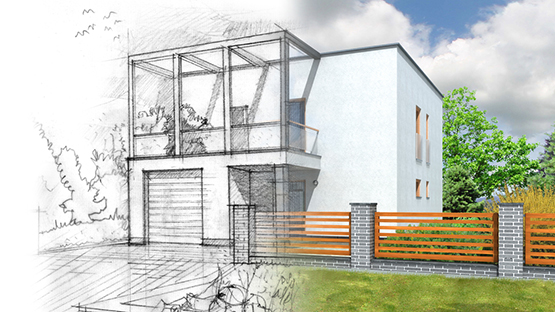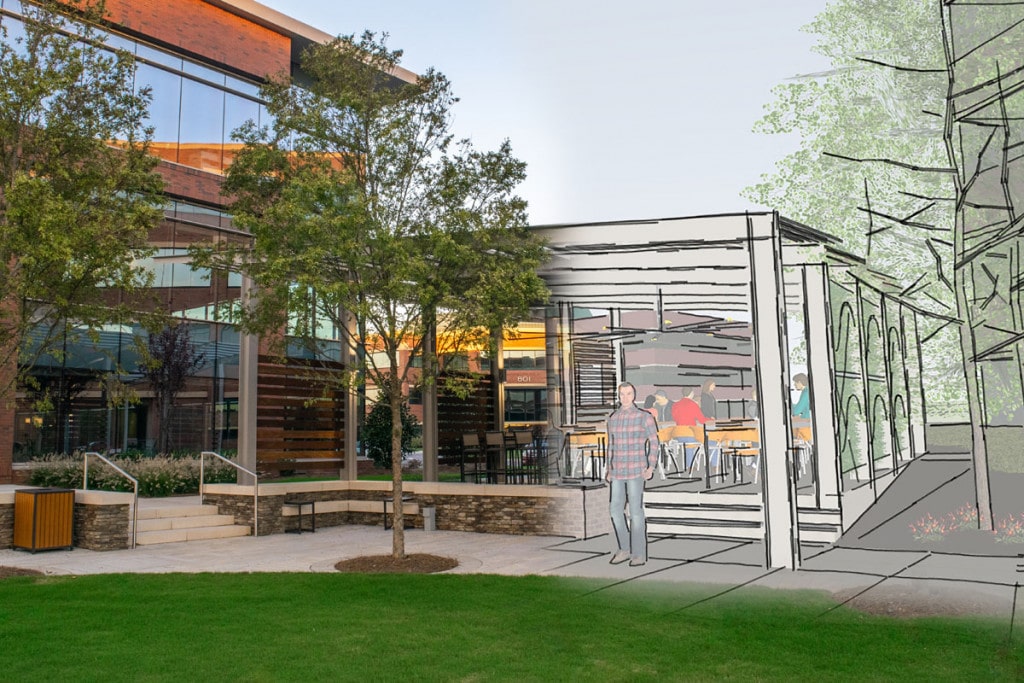How CDA Architects Integrate Eco-Friendly Practices in Architectural Projects
How CDA Architects Integrate Eco-Friendly Practices in Architectural Projects
Blog Article
The Vital Duty of a Designer in Forming Sustainable Urban Atmospheres for Future Generations
The function of an architect in crafting sustainable city atmospheres is progressively critical in reacting to the difficulties of environment adjustment and urbanization. By perfectly integrating ecological principles into their styles, architects not only boost the visual and useful quality of city rooms however likewise address pressing concerns such as power performance and social equity. Their expertise in cutting-edge products and neighborhood involvement shapes developments that resonate with regional worths and ambitions. As we check out the complexities of this area further, it ends up being noticeable that the future of metropolitan living may pivot on the very methods engineers utilize today.
Recognizing Sustainable Urban Layout
Sustainable metropolitan layout integrates eco-friendly principles with city planning to develop environments that are not only comfortable but additionally resilient. This technique highlights the importance of integrating all-natural systems right into the urban material, making certain that advancement fulfills the needs of today without endangering the capacity of future generations to meet their very own requirements. Crucial element of lasting metropolitan design include effective land use, the promo of biodiversity, and the assimilation of green spaces, all of which add to improved lifestyle for locals.
Furthermore, lasting city layout prioritizes the decrease of the metropolitan warm island result, boosted air top quality, and efficient stormwater management. It encourages the use of sustainable resources and energy-efficient building methods, which dramatically reduced carbon impacts. Lasting metropolitan style fosters social equity by developing obtainable public rooms and advertising mixed-use advancements that cater to varied populaces.
With thoughtful planning and innovative layout approaches, lasting urban environments can boost neighborhood resilience versus environment adjustment while fostering financial growth. This alternative approach not only addresses prompt metropolitan challenges yet likewise lays the groundwork for healthier, much more sustainable cities for generations ahead.
Secret Responsibilities of Architects
Architects play an essential function in forming lasting urban atmospheres by converting design concepts into tangible structures and spaces. Their responsibilities include a large range of tasks that contribute to the total success of city layout jobs.
First and primary, engineers perform comprehensive site analyses to recognize the environmental, social, and social context of their projects. This fundamental expertise notifies their layout decisions, making sure that structures balance with their environments. They also take part in joint processes with stakeholders, including city coordinators, engineers, and the neighborhood, fostering an inclusive technique to urban growth.
Furthermore, designers are entrusted with creating styles that enhance power efficiency, resource conservation, and performance. They have to stick to local zoning legislations, developing codes, and sustainability qualifications, guaranteeing compliance while pushing the boundaries of advancement.
:max_bytes(150000):strip_icc()/Buildingdesigns-GettyImages-912482942-db55b3af711044a3a42ad1040c6711a9.jpg)
Innovative Materials and Techniques
In the quest of ecologically accountable design, cutting-edge products and methods have become important elements in the creation of lasting metropolitan environments. Engineers are significantly using materials that decrease ecological impact while boosting power effectiveness. For instance, recycled products, such as recovered timber and repurposed metals, not just minimize waste but additionally add special aesthetic qualities to frameworks.
Furthermore, innovations in technology have actually led to the advancement of high-performance materials, such as protected concrete forms (ICFs) and photovoltaic glass, which add to energy preservation and harness eco-friendly power. Techniques such as passive solar design and green roofings better exhibit how architecture can balance with natural systems, minimizing reliance on synthetic heating & cooling.
Moreover, the integration of smart products, which adjust to ecological adjustments, uses promising avenues for boosting structure efficiency - cda architects. These products can react to temperature fluctuations or moisture levels, optimizing comfort and sustainability
Ultimately, the critical selection and application of innovative products and strategies encourage designers to produce metropolitan spaces that are not only useful and aesthetically pleasing but also resilient and environmentally liable, ensuring a lasting future for generations ahead.
Area Involvement and Partnership
The success of ingenious materials and strategies in lasting metropolitan style is substantially improved by active area interaction and partnership. Architects must identify that the developed atmosphere greatly influences the lives of regional residents, making it important to involve them in the layout process. Involving the neighborhood fosters a sense of possession and accountability, making certain that click resources advancements not only fulfill visual and useful requirements but likewise reflect the worths and ambitions of those that occupy them.

Effective area interaction additionally aids in focusing on social equity within city growth. By taking into consideration the voices of marginalized populaces, architects can produce rooms that are inclusive and equitable. By doing this, neighborhood interaction and partnership end up being indispensable to attaining absolutely lasting city settings that offer the requirements of present and future generations.
Future Patterns in Sustainable Architecture

In addition, improvements in innovation are forming future patterns in lasting architecture. The assimilation of smart products and building systems permits real-time power management, improving performance and minimizing carbon impacts. Developments such as environment-friendly roofing systems, living wall surfaces, and energy-generating facades are ending up being basic methods, further promoting eco-friendly equilibrium within urban atmospheres.
In addition, a shift in the direction of his comment is here biophilic layout is gaining traction, highlighting the link in between nature and human well-being. By integrating all-natural elements, architects produce areas that promote site web psychological health while promoting biodiversity.
Final Thought
Finally, engineers are pivotal in advancing sustainable city environments via their knowledge in layout, ingenious products, and community engagement. By prioritizing energy effectiveness and resource preservation, these specialists add to the production of resilient urban spaces that meet the requirements of existing and future generations - cda architects. The assimilation of eco-friendly concepts not just improves livability however also cultivates social equity, making sure growths reverberate with the worths and ambitions of the neighborhoods they offer
Report this page